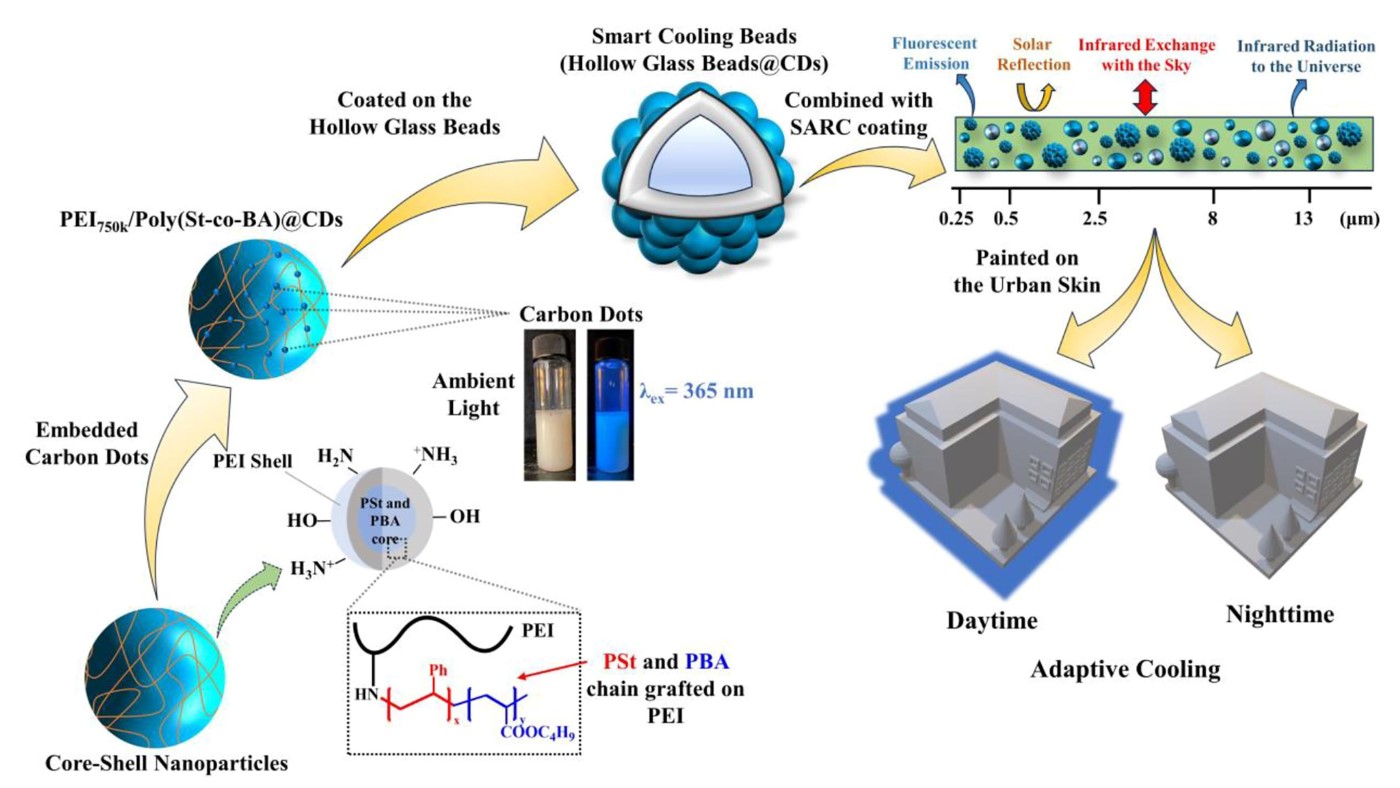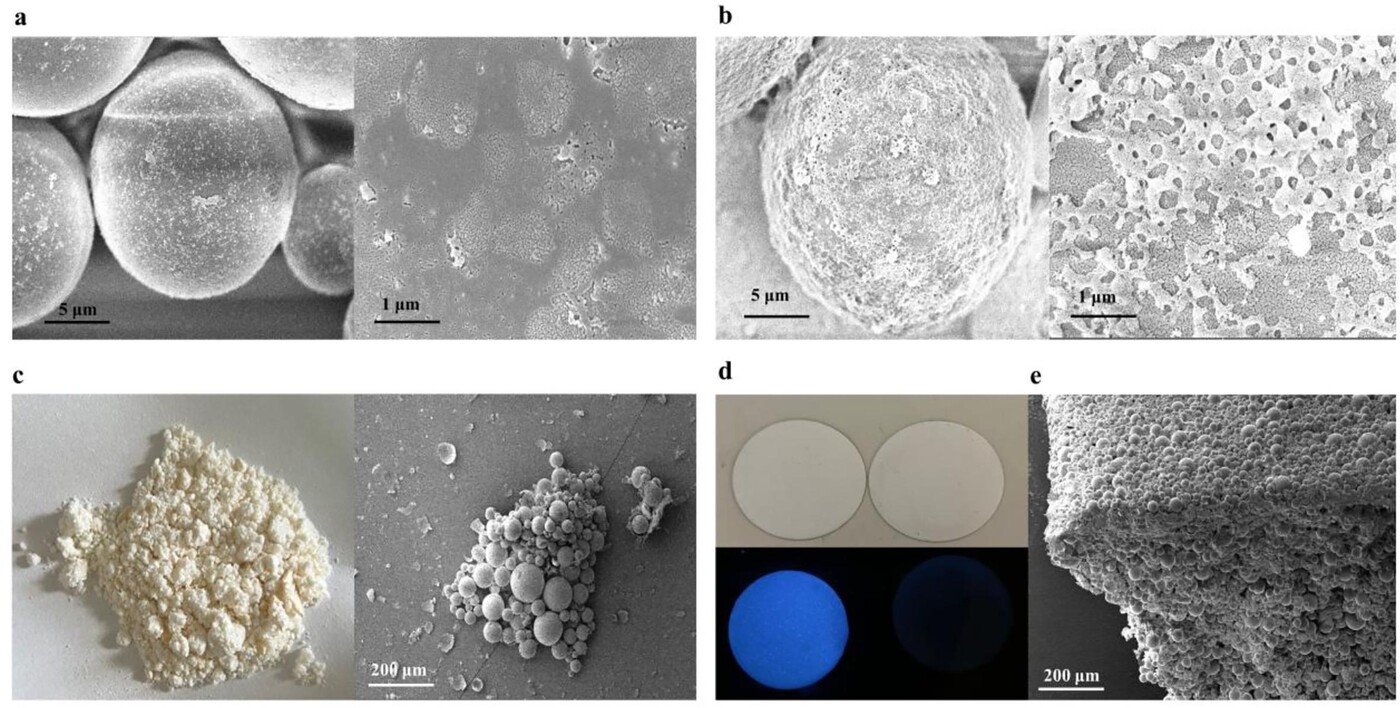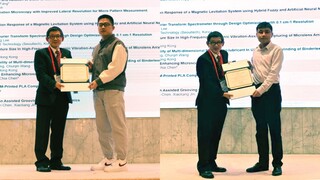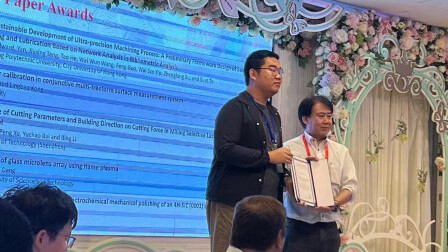Harnessing Polymer Carbon Dots: A New Era of Free Cooling Solutions for Urban Environments
Other Articles

The invention of solar-driven adaptive radiative cooling coating with polymer carbon dots-enhanced photoluminescence offers a scalable and environmentally friendly zero-energy solution for effectively cooling buildings and urban cities.
Study conducted by Prof. Vivien Lin LUand her team
Buildings are significant consumers of energy, accounting for 40% of global energy consumption and 33% of carbon emissions [1]. In urban areas, where population density and building concentration are high, the impact is even more pronounced Note1. Conventional heating, ventilation, and air conditioning systems that rely on electricity contribute significantly to energy consumption. Adaptive passive daytime radiative cooling (PDRC), an energy-free approach utilising reflective coatings that dynamically adjust the reflectivity of sunlight and emissivity of heat radiation in response to temperature and sunlight intensity Note2, provides a promising solution for free cooling and energy efficiency.
Traditional photoluminescent cooling materials typically rely on rare-earth metals and perovskite materials that pose environmental risks. Ensuring the durability and long-term stability of these materials under various weather conditions poses another challenge for practical use. To tackle these challenges, Prof. Vivien Lin LU, Professor of the Department of Building Environment and Energy Engineering at The Hong Kong Polytechnic University, and her research team have invented ground-breaking, environmentally friendly solar-driven adaptive radiative cooling (SARC) coating materials, with an outstanding adaptive PDRC effect that can adjust cooling capacity based on solar irradiance.
A recent study published in the Chemical Engineering Journal, reported that Prof. Lu’s team had pioneered the development of a scalable SARC coating by utilising polymer carbon dots (CDs) as the photoluminescent materials to convert absorbed solar energy into light energy [2]. CDs are a class of carbon-based nanomaterials that exhibit strong fluorescence and unique optical properties that facilitate UV-blocking capacity. They are valued for their high biocompatibility, low toxicity, chemical stability, and ease of surface functionalisation, which allows them to be tailored for specific uses. This innovative coating leverages Smart Cooling Beads (SCBs), which are meticulously engineered by coating commercial hollow glass beads with fluorescent polymer nanoparticles containing carbon dots (FPs@CDs). The integration of these SCBs into the SARC roof coating enhances its photoluminescent properties, as depicted in Figure 1.

Figure 1. Schematic of a scalable solar-driven adaptive radiative cooling (SARC) coating.
The patented fluorescent polymer nanoparticles, FPs@CDs, are composed of three distinct components. At their core lies a hydrophobic structure made from poly(styrene-co-butyl acrylate) (Poly(St-co-BA)), which is enveloped by a hydrophilic polyethyleneimine (PEI) shell (Figure 2a). This shell is covalently bonded to the core, creating a cohesive unit. Embedded within the PEI shell are CDs, which are crosslinked with carboxylic acid and uniformly distributed throughout (Figure 2b). The morphology of these nanoparticles, as revealed by transmission electron microscopy, shows a spherical shape with high uniformity and an average diameter of 120 nm (Figure 2c).

Figure 2. Microstructures and optical property of Fluorescent nanoparticles (FPs). a) chemical structure of PEI750k/Poly(St-co-BA) fluorescent nanoparticles; b) SEM images depicting of FPs@CDs; c) TEM of FPs@CDs
To scale up the application of these fluorescent properties, the FPs@CDs were combined with hollow glass beads to form SCBs (Figure 3). Produced through an aqueous solution method (Figure 4), these SCBs serve as photoluminescent fillers in the SARC coatings. The process involves coating the hollow glass beads with the FPs@CDs through direct mixing and drying, resulting in a surface that, due to their similar chemical composition, is highly compatible with P(St-co-BA) latex. This method allows for the introduction of CDs into hollow glass beads of varying sizes, enhancing their photoluminescent properties and demonstrating scalability.

Figure 3. Characterization of the smart cooling beads and SARC coating. a) SEM images of uncoated hollow glass beads; b) SEM images of the coated SCBs; c) Optical picture and SEM images of the SCBs; d) Photoluminescence test comparison of SARC coating (left) and normal PDRC coating (right); e) SEM images of the SARC coating.

Figure 4. Preparation schematic of SARC coating.
The new SARC coating has demonstrated remarkable improvements in cooling performance compared to conventional radiative cooling coatings. By enhancing effective daytime solar reflectance from 92.5% to 95%, the SARC coating increases the cooling effect by 10% to 20%. This translates to a significant temperature reduction, with the potential to lower concrete rooftop temperatures by up to 25°C. In a practical demonstration, the SARC coating was applied to the roofs of container houses at a construction site in Hong Kong SAR, China. After two and a half years of continuous outdoor exposure, the coated roofs maintained a temperature 24°C cooler than uncoated concrete roofs under sunlight, showcasing the coating's durability and effectiveness. The solar reflectance of the coating decreased by less than 2% over this period and, by reducing the air-conditioning load, the application resulted in annual energy savings of 10%.
The impact of the SARC coating extends across various climatic regions, as evidenced by a comprehensive radiative cooling model taking into account various meteorological factors that map with the average annual temperature drops and cooling power in Hong Kong and a further ten cities in Mainland China [3, 4]. The results indicate that the stronger the solar radiation, the greater the temperature difference achieved by the SARC coating. In cities such as Hong Kong, Beijing, Hangzhou, and Guangzhou, among others, the adoption of this innovative cooling solution is projected to save between 97 and 136 kWh/m² of electricity annually. This substantial energy saving highlights the potential of the SARC coating to significantly reduce energy consumption for space cooling and enhance thermal comfort in buildings, making it a promising solution for sustainable urban development in diverse climates.
The scalable SARC roof coating marks a significant breakthrough in zero-energy building cooling technology. The research team presents the first successful incorporation of polymer CDs into a SARC coating, characterised by their high biocompatibility, low toxicity, and ease of surface functionalisation, providing a universal enhancement applicable to various matrix materials. As global warming intensifies, the need for efficient cooling solutions becomes increasingly urgent. The novel SARC coating not only demonstrates exceptional cooling performance across diverse climates but also offers aesthetic versatility by being producible in various colours. This adaptability makes it suitable for application on building roofs, walls, roadways, and other urban surfaces, contributing to sustainable urban development and mitigating the urban heat island effect. Furthermore, integrating this photoluminescent coating into bifacial solar photovoltaics could lead to synergistic enhancements in thermal management and power generation, potentially improving electrical power generation by 30-50% and reducing carbon emissions by 30% compared to conventional uncoated rooftops.
Looking ahead, the team is exploring the integration of various CDs for spectral modulation into their previously invented paraffin-based self-adaptive radiative cooling coatings [5], aiming to create smart urban skins that respond dynamically to environmental conditions.
The research is supported by the Collaborative Research Fund of Hong Kong’s Research Grants Council (Project No. C5051-22GF) and the National Natural Science Foundation of China/ Hong Kong’s Research Grants Council (NSFC/RGC) Joint Research Scheme (Project No. N_PolyU513/18), and The Hong Kong Polytechnic University through Projects of Research Institute for Smart Energy (Project No. Q-CDAJ) and the University’s Research Institute for Sustainable Urban Development (Project No. 1-BBWX). The supplementary data can be downloaded from https://ars.els-cdn.com/content/image/1-s2.0-S1385894724047508-mmc1.docx. The data source and code can be obtained from the corresponding authors upon request.
Prof. Lu has been recognised by Stanford University as one of the top 2% most-cited scientists worldwide (career-long) in the field of energy for five consecutive years, from 2020 to 2024. She was named as a "Highly Cited Researcher" by Clarivate Analytics in 2018. In recognition of her outstanding professional achievements and services in both academia and industry, Prof. Lu was elected as a Fellow of the Hong Kong Institution of Engineers in 2021. She is the chairlady of Energy Institute (Hong Kong Branch).
| Notes |
|---|
In Hong Kong, a special administrative region of China, buildings account for about 90% of total electricity consumption, and over 60% of carbon emissions is attributable to generating electricity for buildings.
For instance, these photoluminescent cooling materials can increase their reflectivity in order to minimise heat absorption during peak sunlight hours and adjust their emissivity to maximise heat dissipation when cooling is most needed.
| References |
|---|
[1] World Economic Forum. (2024). Transforming energy demand [White paper]. https://www3.weforum.org/docs/WEF_Transforming_Energy_Demand_2024.pdf
[2] Gong, Q., Chun Wong, H., Chen, J., Li, P., & Lu, L. (2024). Solar-driven adaptive radiative cooling coating with polymer carbon dots-enhanced photoluminescence for urban skin. Chemical Engineering Journal (Lausanne, Switzerland: 1996), 494, 153262-. https://doi.org/10.1016/j.cej.2024.153262
[3] Chen, J., Lu, L., & Gong, Q. (2021). A new study on passive radiative sky cooling resource maps of China. Energy Conversion and Management, 237, 114132-. https://doi.org/10.1016/j.enconman.2021.114132
[4] Chen, J., Lu, L., Gong, Q., Lau, W. Y., & Cheung, K. H. (2021). Techno-economic and environmental performance assessment of radiative sky cooling-based super-cool roof applications in China. Energy Conversion and Management, 245, 114621-. https://doi.org/10.1016/j.enconman.2021.114621
[5] Gong, Q., Lu, L., & Chen, J. (2023). Design and performance investigation of a novel self-adaptive radiative cooling module for thermal regulation in buildings. Applied Energy, 352, 121928-. https://doi.org/10.1016/j.apenergy.2023.121928
 | Prof. Vivien Lin LU Department of Building Environment and Energy Engineering |



